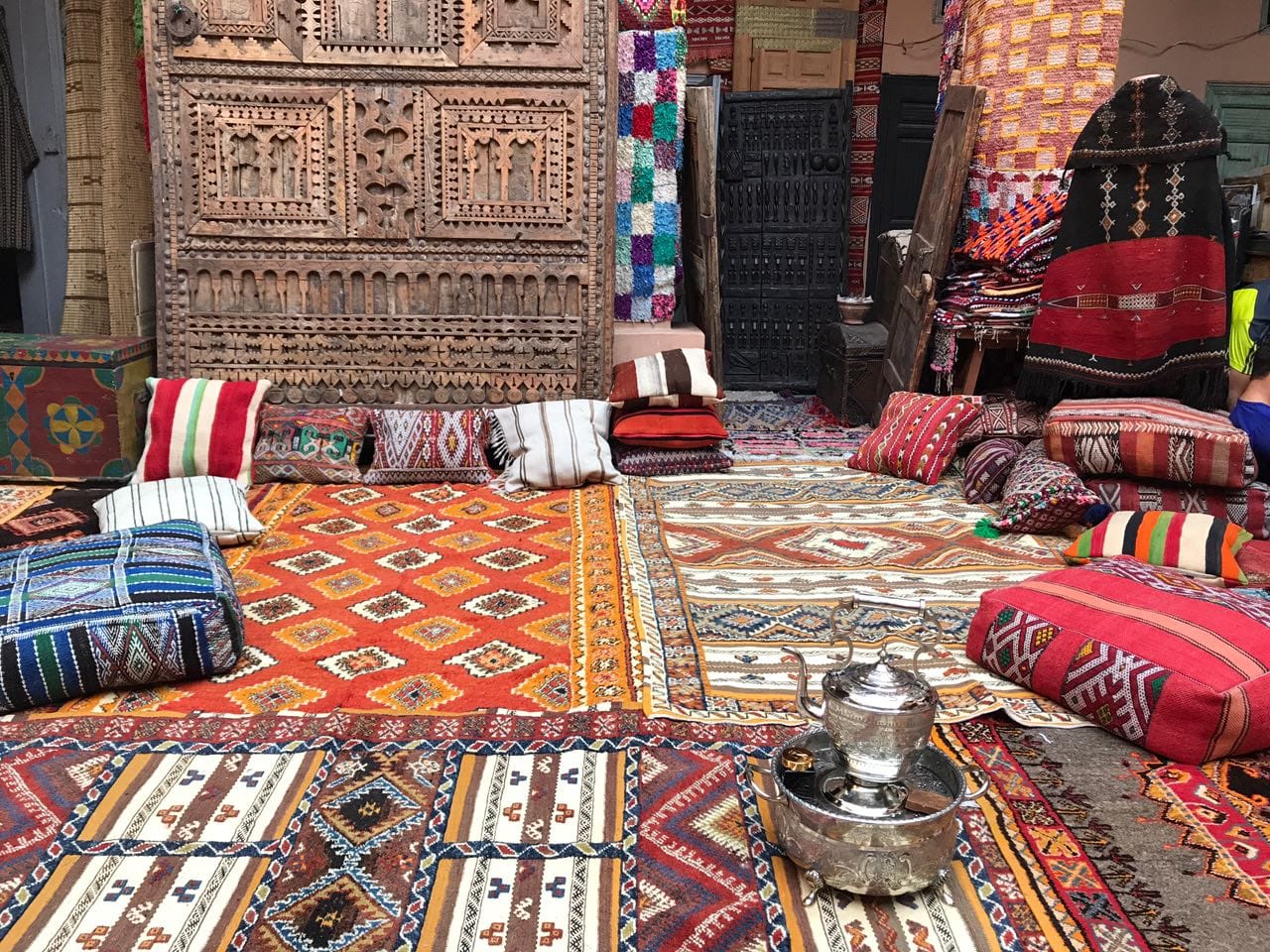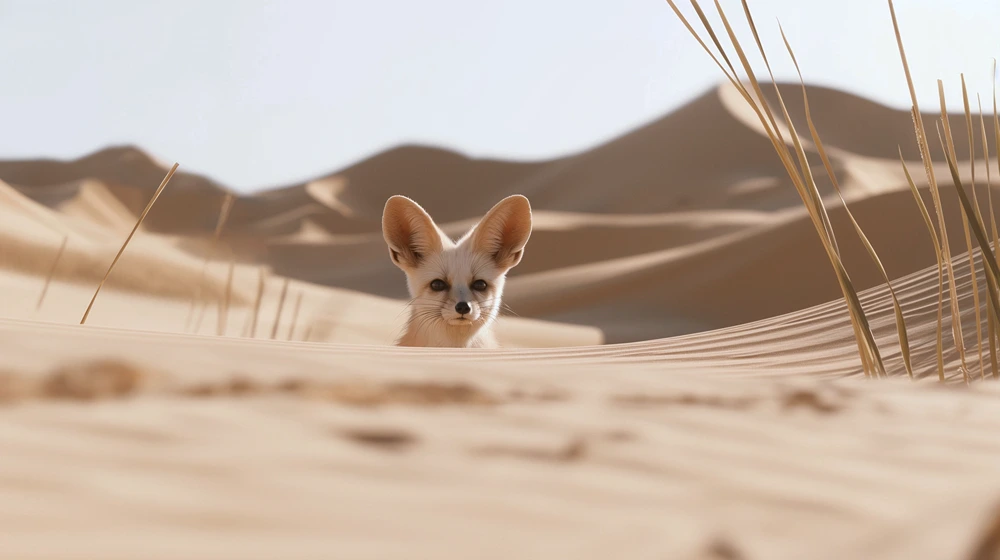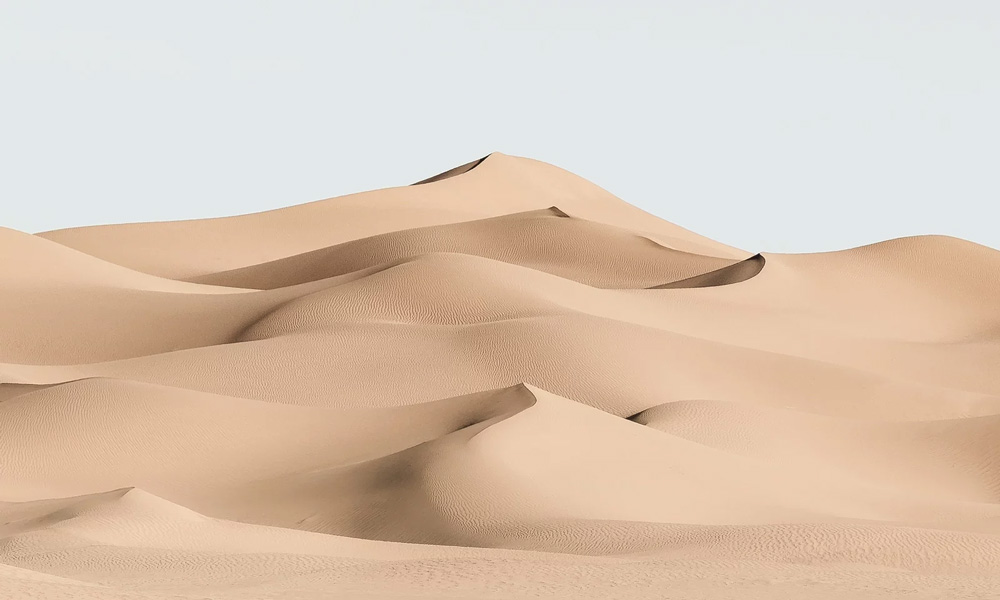Imagine the Sahara Desert, an endless sea of golden sands, where life seems an impossible feat. Yet, within this harsh and unforgiving landscape, life flourishes in the most unexpected ways.
In this blog post, we’ll discover 10 amazing Sahara Desert animals that capture the essence of this magical place. These creatures are not just survivors; they are masters of their domain, each with unique adaptations that allow them to thrive in this extreme environment.
Fennec Fox: The Iconic Desert Ambassador
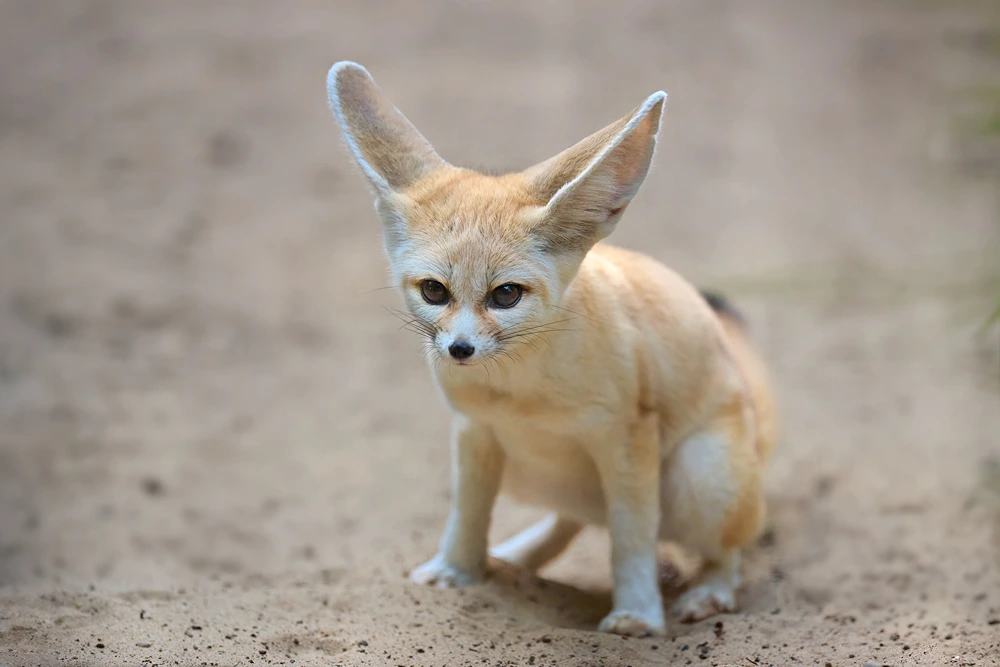
Meet the Fennec Fox, the Sahara Desert’s most endearing inhabitant. With its oversized ears and adorably petite frame, this fox is the epitome of desert adaptation. These remarkable ears aren’t just for show; they serve as natural air conditioners, dissipating heat and keeping the fox cool in the scorching Sahara heat.
The Fennec Fox’s creamy, sand-colored coat provides perfect camouflage against predators and the sun’s unrelenting rays. As nocturnal animals, they venture out at night, using their keen senses to hunt for insects, plants, and small animals.
However, the survival of this desert ambassador is under threat from human activities. Local people often trap these foxes for exhibition or sale to tourists, posing a significant risk to their well-being and sustainability in their natural habitat.
Dromedary Camel: The Ship of the Desert
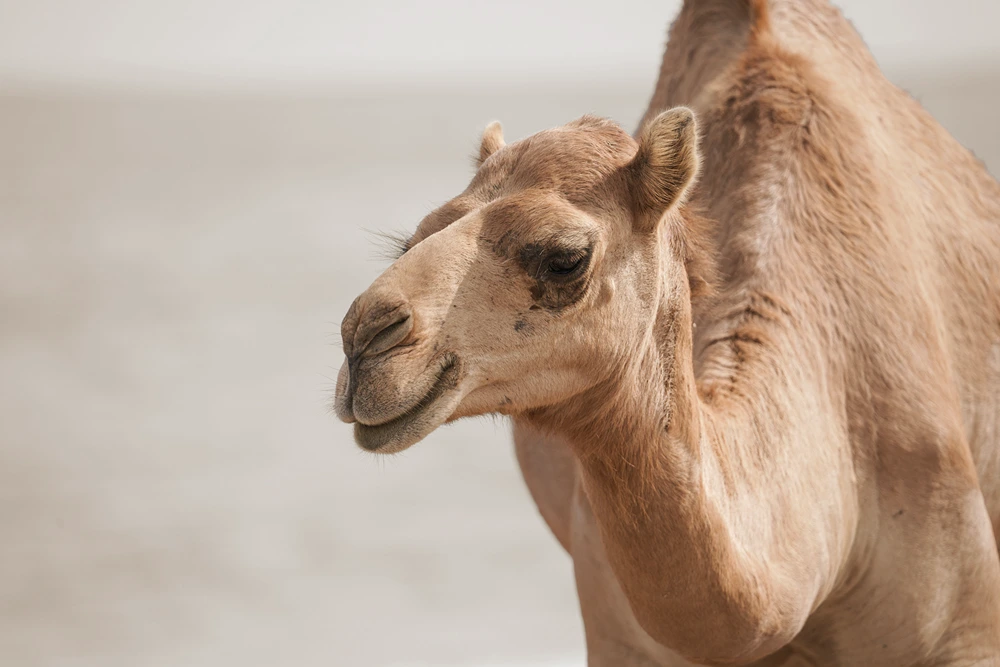
Picture a vast sea of sand – that’s the Sahara. And in this sea, the Dromedary Camel sails like a ship. It’s more than just an animal; it’s a friend and hero in the desert, able to live where most can’t.
Each step of the camel’s journey tells stories of old caravans and nomadic tribes, linking the past and present. Its hump isn’t just for show; it stores energy, letting the camel go days without water. As the evening turns the desert golden, they keeps moving, calm and wise. Watching them is like seeing the Sahara’s heart – beautiful, tough, and full of life.
These gentle giants have been indispensable to humans for centuries, serving as a means of transportation and a source of milk, meat, and wool. And also play a vital role of ecotourism, offering visitors a unique way to experience the desert’s majestic beauty.
Dorcas Gazelle: The Graceful Desert Dweller
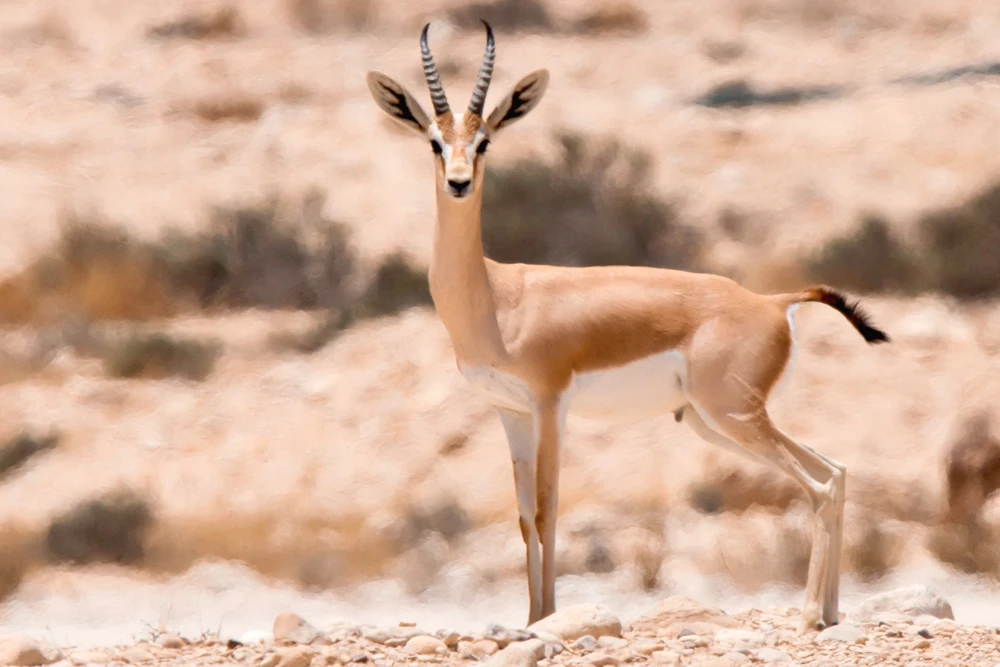
The Dorcas Gazelle, with its slender build and elegant horns, is a testament to the beauty that thrives in the Sahara Desert. These gazelles are masters of desert survival, navigating the arid landscape with ease. Their light brown fur blends seamlessly with the sandy environment, providing camouflage from predators.
Despite the harsh conditions of the Sahara, the Dorcas Gazelle has adaptations that make it a master of survival in this arid landscape. Their large eyes are not just for beauty; they provide a wide field of vision, helping them spot predators from afar and can live its whole life without drinking water, getting moisture from the plants it eats.
As one of the Sahara Desert animals perfectly adapted to a life of scarcity, they sip water from the dew and find nourishment where it seems none exists. Watching a Dorcas Gazelle leap across the sand is like watching a ballet set on an endless stage, a reminder of the elegance that thrives in the heart of the desert.
Saharan Horned Viper: The Deadly Camouflager
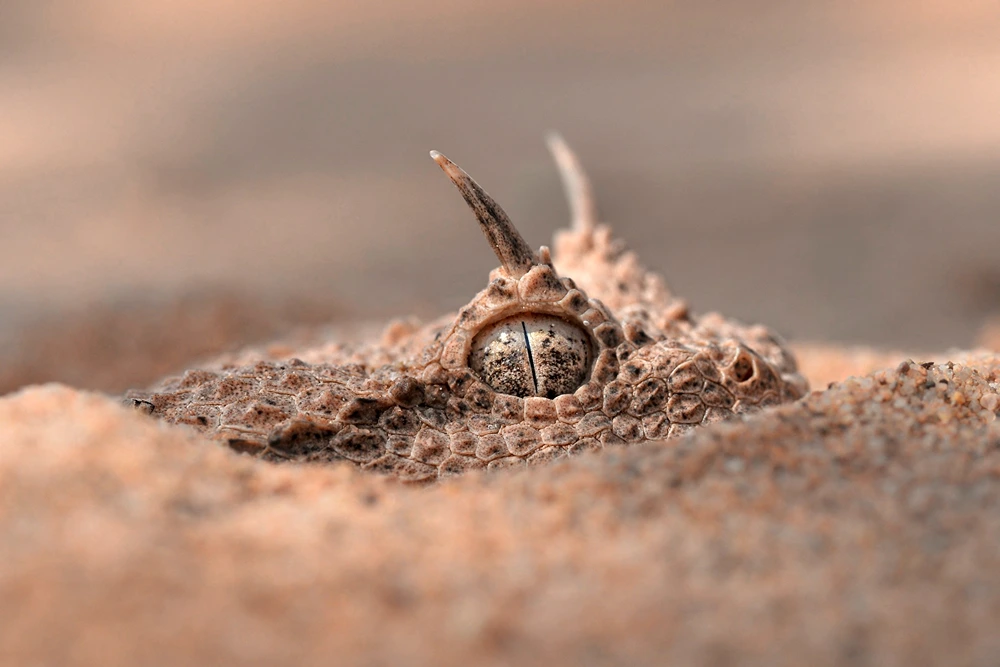
The Saharan Horned Viper is not just any snake; it’s a master of disguise within the expansive Sahara Desert. This snake is known for its distinctive “horns” above its eyes, which are actually scales. Imagine it blending into the sandy desert so well that you could walk right past without noticing.
This snake has a super neat way of moving – it slithers sideways, making a unique zigzag trail in the sand. Even though it has a venomous bite, it usually keeps away from people and hunts for food at night.
What’s amazing is how this viper can stay cool in the desert heat and be such a sneaky hunter. It buries itself in the sand where it’s cooler, waiting patiently for the perfect moment to strike. And if it feels threatened, it can make a raspy sound by rubbing its scales together, warning others to back off. It’s one of the Sahara’s most interesting animals.
Berber Skink: The Desert Sandfish
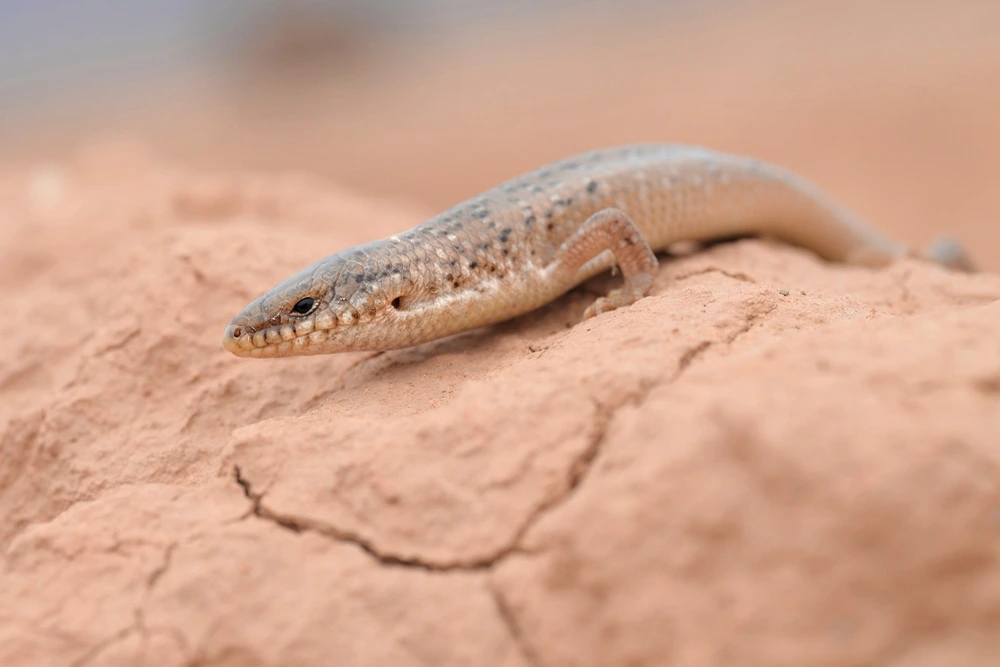
Diving into the sandy seas of the Sahara, the Berber Skink is a real-life desert swimmer, but without the water. This reptile has a sleek, shiny body that’s just perfect for sliding under the sand. It’s like watching a fish swim, but in the Sahara desert!
The Berber Skink has this amazing ability to vanish into the sand in seconds, hiding from the hot sun and predators. Its smooth scales help it move through the sand as easily as if it were swimming in the ocean. And when it comes to dinner time, this skink isn’t shy. It’ll pop up from its sandy hideout to snatch up insects and small creatures.
But there’s more to the Berber Skink than just its hunting skills. This skink is a master at finding the coolest spots during the scorching days and knows exactly when to come out and enjoy the cooler desert nights. So, if you’re exploring the Sahara and see a ripple under the sand, it might just be the Berber Skink, the desert’s very own sub-sand swimmer.
Desert Jerboa: The Desert Acrobat
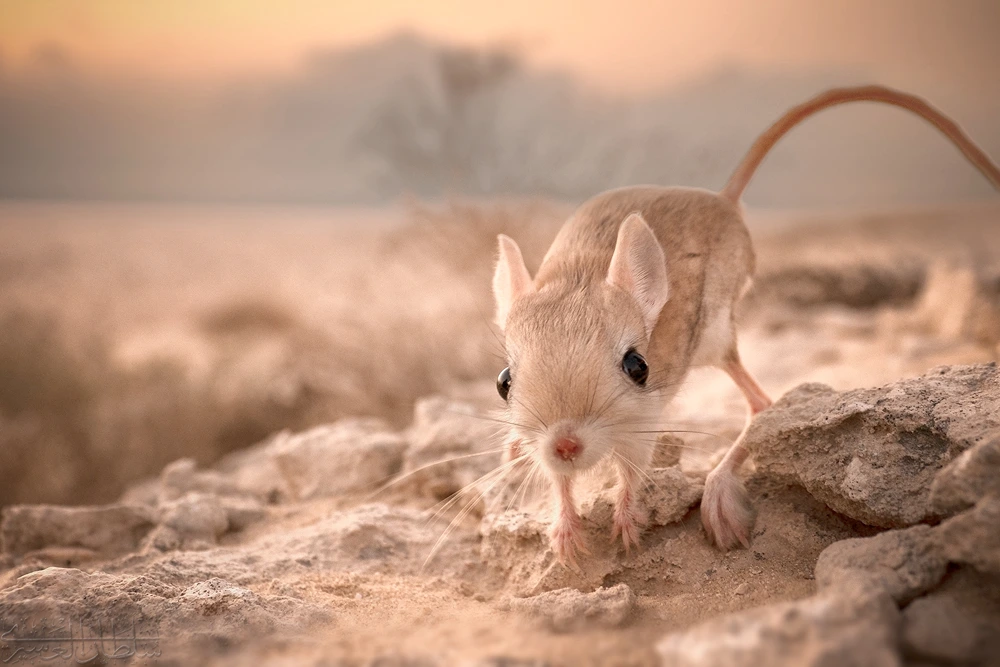
The Jerboa is like the acrobat of the Sahara Desert, leaping and bounding across the sand with ease. This tiny creature has long hind legs, almost like a kangaroo, which it uses to jump great distances.
Jerboas are mostly active at night, which helps them avoid the daytime heat and predators. By moonlight, they search for seeds and plants to eat, using their excellent hearing to stay alert for any threats. Their tails help the Jerboa balance while hopping and make sharp turns.
Living in burrows during the day keeps them cool and safe. Jerboas have a fascinating way of sealing the entrance to their homes to maintain humidity and temperature. With their energetic jumps and unique lifestyle, Jerboas bring a touch of whimsy to the harsh Sahara landscape.
Desert Sparrow: Sahara’s Melodious Bird
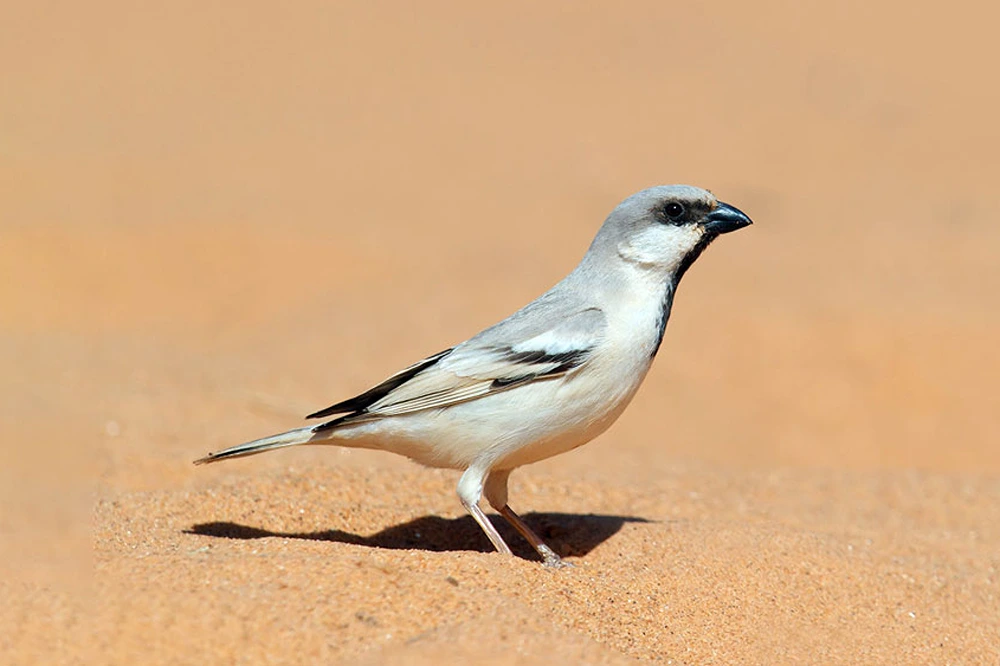
The Desert Sparrow is a little bundle of joy and resilience in the vast Sahara. It’s not just any bird; it has a special talent for living in the desert. These sparrows have adapted to the extreme heat and scarce water by finding creative ways to stay cool and hydrated. They often nest in the most unlikely places, like under the roofs of desert houses or even in camel stables, to escape the scorching sun.
Their song is a melody that brings life to the silent desert. Listening to a Desert Sparrow can make the vast, empty Sahara feel like a vibrant community. These birds are not just surviving; they’re thriving, making the best of what the desert offers. They remind us that beauty and life can flourish in the most unexpected places.
Desert Hedgehog: The Spiny Night Walker
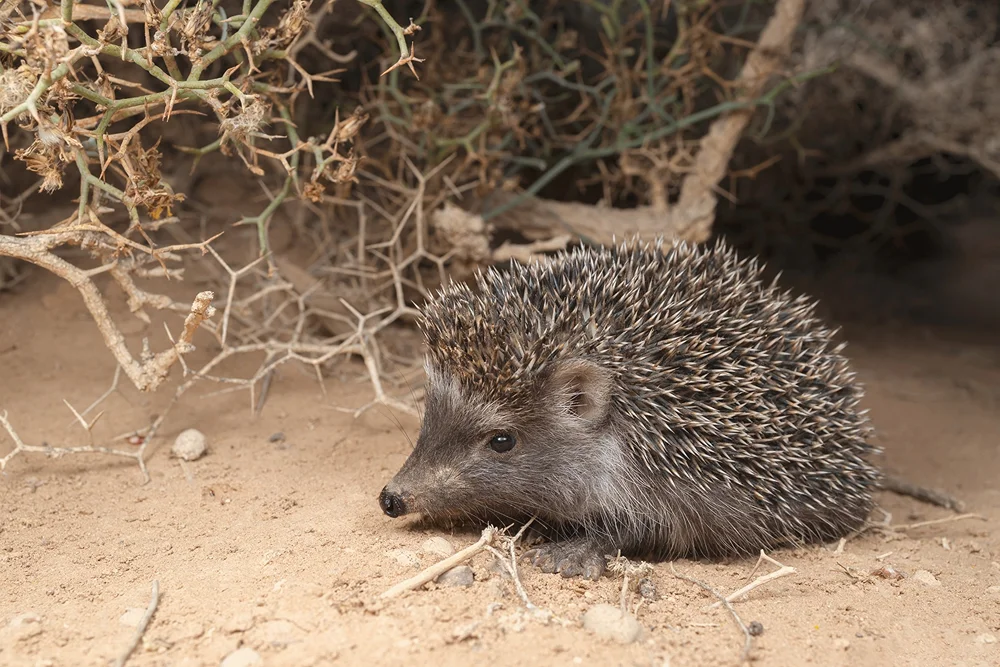
Meet the Desert Hedgehog, one of the Sahara’s cutest survivors. Unlike its European cousins, this little guy is all set for the desert life. It’s smaller, which helps it lose less water and stay cool. Plus, its light-colored spines reflect the desert sun, keeping it from getting too hot.
At night, when the desert cools down, the Desert Hedgehog comes out to play. They aren’t picky eaters; they love insects, small animals, and even plants. What’s really cool is how they deal with venomous scorpions and snakes. They have immunity to some venoms, which means they can munch on these dangerous critters without a problem.
Living in burrows or under bushes, Desert Hedgehogs are the ultimate survivors. They’re not just about survival, though. They’re important for the desert, helping control pests and spreading plant seeds. So, next time you’re on a Sahara adventure, keep an eye out for these spiky little night walkers. They might just surprise you with their resilience and charm.
Saharan Silver Ant: The Heat Conqueror
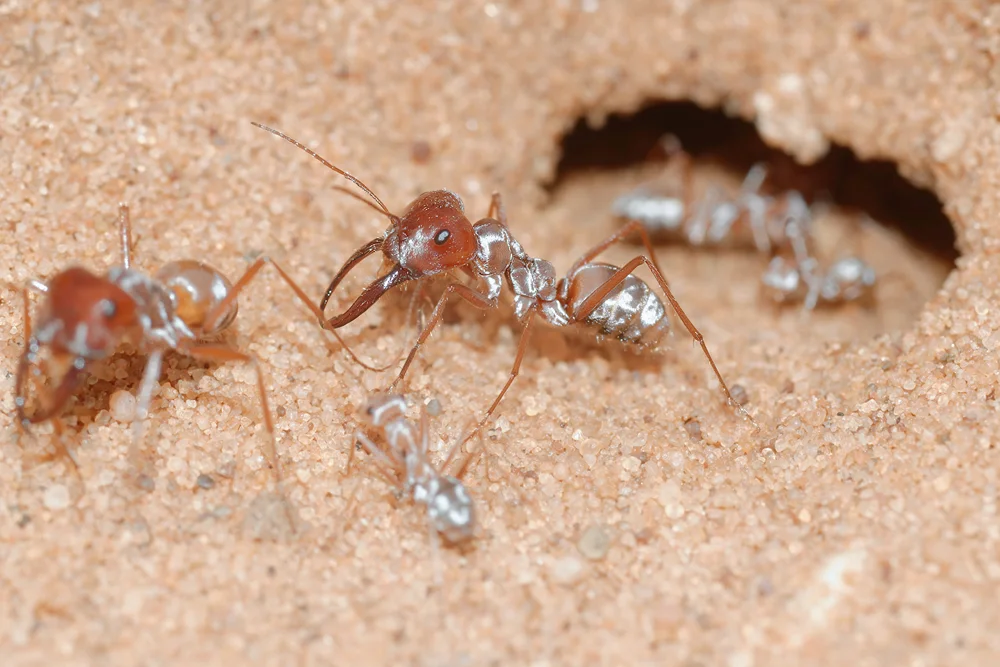
The Saharan Silver Ant, known as the heat conqueror, this ant can withstand temperatures that would be lethal to most other species. During the midday heat, when the desert becomes a furnace, and other animals seek shade, this ant can ventures out in search of food.
What makes these ants truly remarkable is their shiny, silver coat. This unique feature reflects the sunlight, helping them manage the intense heat of the desert sun. Their long legs elevate them above the hot sand, minimizing body heat absorption.
Watching the Saharan Silver Ants on their brief forays out of the nest is like witnessing a masterclass in survival. They are fast, efficient, and incredibly adapted to their environment. Their ability to thrive under such extreme conditions is a testament to the resilience of life in the Sahara.
Beetle: The Industrious Scavenger
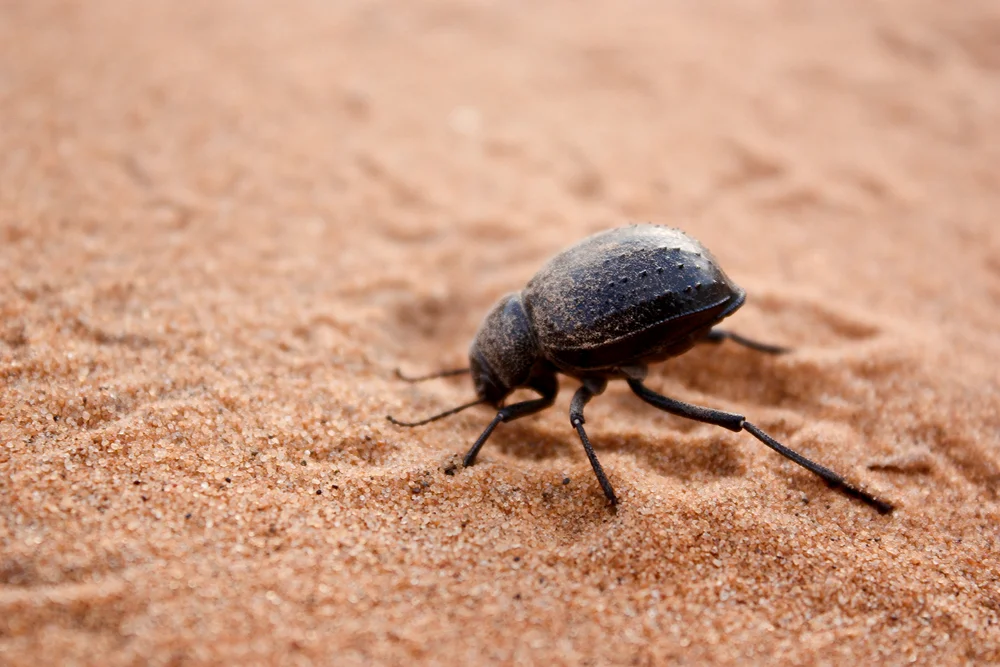
In the heart of the Sahara, where life clings to the rarest of resources, beetles emerge as unsung heroes. These industrious scavengers are the cleanup crew of the desert, playing a crucial role in the ecosystem. They navigate the sands, breaking down plant and animal waste, turning it into nutrients that enrich the desert floor.
What’s truly fascinating about these beetles is their resilience. They’ve adapted to survive in one of the harshest environments on Earth, developing behaviors and physical traits that help them conserve water and avoid the extreme heat. Some species even collect dew on their bodies as a source of hydration.
During your desert tour exploration, it’s highly likely that you will spot tracks in the sand left by these little insects. These tracks tell a story of survival, of life’s persistence in the most challenging conditions.
Conclusion
As we conclude our journey through the Sahara, the resilience and beauty of Sahara Desert animals remind us of nature’s incredible ability to adapt and thrive. Each creature, from the smallest ant to the swift gazelle, plays a vital role in the desert’s ecological tapestry.
